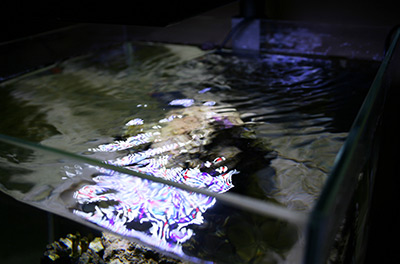Okay, class, please put away your notes and calculators, take out your number-two pencils (clear-a-vous but for a number-two!), and complete this easy multiple-choice quiz:
Which of the following reef-lighting options costs the least?
- A) Zany Caribbean Chris’s Homemade Reef-Suitable Coral-Blaster® LEDs for $250.00
- B) “Gently used,” trusted-name-brand LEDs for $800.00
- C) The same reputable LEDs from answer B—only brand-spankin’ new this time—for $1,200.
- D) A recently discontinued, but once quite popular, LED fixture from now-defunct Company X for $475.00
So what’s the right answer? Which option is cheapest? As anyone with any experience in this hobby will be quick to point out, the only possible correct answer is actually Secret Option E: “Not enough information.”
Shopping by price alone in this hobby can lead to madness—or, at the very least, end up costing you a heck of a lot more in the long run if you have to shell out again and again to replace inadequate or downright lousy equipment. Let’s take a closer look at each of the quiz answers and examine why they may or may not represent the best price. And keep in mind that this same thought process can be applied to any type of aquarium gear.
Answer A: The Less Reputable Route
If a company sounds fly-by-night (and I don’t mean in the awesome Rush sort of way) and its offerings too good to be true, such is usually the case. And if/when the product doesn’t live up to the company’s hype—as the suspiciously low, low price suggests it won’t—you’ll likely find that Zany Caribbean Chris is not big on responding to customer complaints and standing behind his product. Besides, there’s just something deeply disturbing about that name…I can’t put my finger on it.
Answer B: The Gently Used Route
Gently used name-brand equipment can be an excellent value, and I’ve turned to this option more than once myself. The challenge lies in vetting the source to ensure the term “gently” actually applies to the degree of wear, so the old adage caveat emptor definitely applies here! Naturally, buying used gear from a friend, fellow aquarium club member, or trusted local dealer is a much safer bet than buying it online from a stranger sight unseen.
Answer C: The Brand New, Big Name Route
Though this option is the most expensive upfront, it can actually be the most cost-effective in the long run. That certainly doesn’t mean you have to buy the most expensive lights (or other equipment) on the market. However, if the product is highly rated by fellow hobbyists (who have used it in applications similar to yours), manufactured by a reputable company, and priced at a level relatively consistent with similar product lines, odds are it’s a fairly decent buy. Purchasing the product new also means it will have the protection of a manufacturer’s warranty and, assuming you buy it from a respected retailer, solid customer-service support.
Answer D: The Close-Out Route
Close-out products can be great bargains, but if you buy them, keep in mind that you may be out of luck if you need to get replacement parts or accessories for them in the future. I ran into this problem in the early 2000s when I bought a metal halide/fluorescent combo fixture that had been phased out by the manufacturer. Actually, at the time of the purchase, I had no idea it had been discontinued, as nothing in the online vendor’s product description indicated such.
The fixture worked just fine for many years, and it was easy enough to replace the MH bulbs and fluorescent tubes, which were standard items. However, I ran into trouble when the ballast for the fluorescent lamps died and I went back to the same vendor for a new one. When the replacement arrived, it looked exactly the same but with one very noteworthy exception: the wiring was reversed from the original so none of the connections matched up.
It was only after I emailed the vendor to discuss this dilemma that I learned I had purchased a discontinued fixture. I was further advised I would need to rewire the ballast myself so the connections lined up—a solution that struck me as most odd given the potential liability and warranty-voiding issues usually attendant upon such modifications. Anyhow, after a lot of uncharacteristic griping on my part, the sales rep ultimately—and none too enthusiastically, I might add—agreed to modify another ballast and ship it to me.
So, the problem was ultimately solved, though not in ideal fashion, and one can easily see how a similar situation involving discontinued equipment might conclude less favorably, leaving the customer “high and dry.



